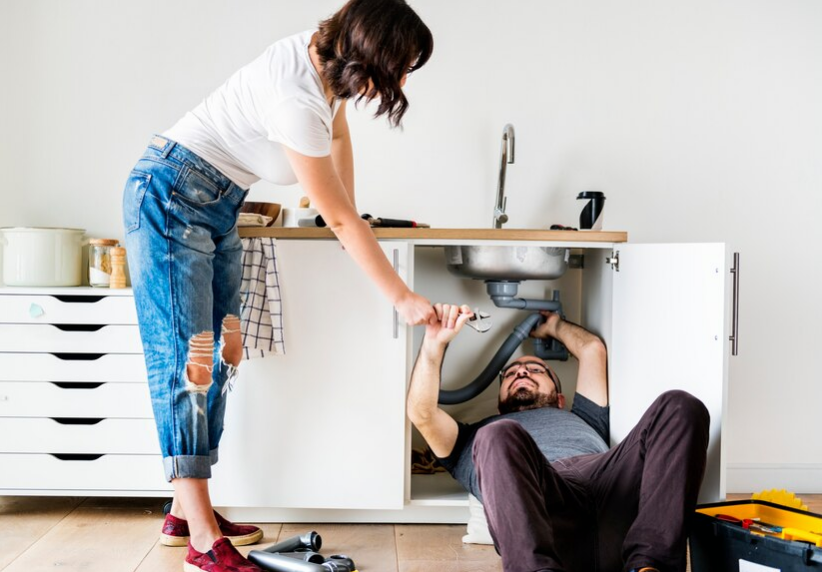You may not think about home safety until an emergency occurs, but being prepared can save lives and prevent costly damage. Emergency repairs can arise from a variety of situations, from natural disasters to faulty appliances or plumbing.
It’s important to take steps to identify potential hazards in your home, develop an emergency plan, and create a home emergency kit to be ready for any situation.
Identifying potential hazards in your home is the first step towards preventing emergencies. This can include checking for dangerous chemicals or materials, ensuring smoke detectors and carbon monoxide detectors are installed and working properly, and inspecting appliances and electrical systems for frayed wiring or other hazards.
By taking proactive measures to prevent emergencies, you can help keep your loved ones and your home safe. In this article, we’ll explore the importance of home safety and provide tips for preparing for emergency repairs.

Identifying Potential Hazards in Your Home
As you assess your living space, take note of any potential dangers that may lurk within. Common hazards in the home include slippery floors, sharp objects, and exposed electrical wires.
To prevent accidents, make sure to keep floors dry and free of clutter, store sharp objects in a secure location, and cover exposed wires with electrical tape or have them repaired by a professional.
Childproofing solutions are also important to consider, especially if you have young children in the home. Safety measures such as installing safety gates, securing furniture to walls, and covering electrical outlets can help prevent accidents and injuries.
It’s also important to keep hazardous materials such as cleaning products and medications out of reach and locked away. By identifying potential hazards and taking steps to prevent them, you can create a safer living environment for yourself and your loved ones.
Developing an Emergency Plan
You need to map out a game plan for when the unexpected strikes, so you can be ready to tackle any curveballs life throws your way. One of the most important aspects of this plan is developing an emergency evacuation strategy. This is especially crucial if you live in an area prone to natural disasters like hurricanes, earthquakes, or wildfires.
Start by identifying the safest routes out of your home and neighborhood, and establish a meeting place for your family in case you get separated. Make sure everyone knows how to safely shut off utilities like gas and electricity, and have a designated person to contact in case of an emergency.
It’s also important to practice your evacuation plan with your family, so everyone knows what to do in case of an emergency. Communication strategies are also crucial during an emergency, so make sure everyone has a way to stay in contact with each other, whether it’s through cell phones or two-way radios.
By developing an emergency plan, you can help ensure the safety of yourself and your loved ones in the event of an unexpected emergency.
Creating a Home Emergency Kit
Don’t forget to gather necessary supplies like non-perishable food, water, first aid kits, and flashlights to create a comprehensive emergency kit for your household. These emergency kit essentials will ensure that you and your family are prepared for any unexpected disaster or emergency.
You should also consider adding additional items like blankets, extra clothing, and personal hygiene products to your emergency kit.
When creating your emergency kit, storage solutions are also an important consideration. You should choose a location that is easily accessible and known to all members of your household.
It’s recommended that you keep your emergency kit in a waterproof container or bag to protect the contents from moisture and other environmental factors.
By taking the time to gather the necessary supplies and properly store them, you’ll be better prepared to handle any emergency situation that may arise.
Knowing When to DIY and When to Call in the Professionals
Knowing when it’s best to fix things yourself versus calling in the pros can be a tricky decision, but with a little know-how and experience, you’ll be able to handle household issues like a boss.
When it comes to DIY safety, you should always prioritize your well-being. Before attempting any repair work, make sure to wear appropriate safety gear, such as gloves, goggles, and a dust mask. If you’re unsure about a specific repair, it’s better to err on the side of caution and call in a professional.
That being said, there are some repairs that can easily be tackled on your own. Simple tasks like replacing light bulbs, unclogging drains, and fixing leaky faucets can save you money and help you gain valuable experience. Just remember to always turn off the power or water supply before attempting any repairs, and follow any instructions or guides closely.
When in doubt, consult with someone more experienced or do some research online. However, for more complex repairs or anything involving electrical or gas systems, it’s best to call in the professionals. They have the knowledge and tools to get the job done safely and efficiently, saving you time and potential disaster.
Maintaining Your Home for Long-Term Safety
Take care of your humble abode and it’ll take care of you in return. Regular maintenance is key to ensuring your home remains a safe haven for years to come.
As a homeowner, it’s important to stay on top of regular inspections and preventative measures to avoid potential hazards. By doing so, you not only protect yourself and your family but also prevent expensive repairs that could have been avoided.
Regular inspections can help identify any issues before they become major problems. For example, checking your smoke detectors every month can alert you to any malfunctions and ensure they’re working properly in case of a fire.
Additionally, inspecting your HVAC system regularly can prevent any potential gas leaks or electrical hazards. By taking these preventative measures, you can rest easy knowing that your home is safe and secure.
Frequently Asked Questions
How do I know if my home insurance covers emergency repairs?
Are you unsure if your home insurance covers emergency repairs? The first step is to review your policy or contact your insurance provider directly. Insurance coverage can vary depending on the type of policy you have, so it’s essential to understand what’s included.
When making a claim for emergency repairs, it’s important to follow the claim process outlined in your policy. This typically involves notifying your insurance company as soon as possible and providing documentation of the damage.
With the right insurance coverage and proper claim process, you can have peace of mind knowing that emergency repairs will be covered in the event of an unexpected event.
What should I do if my emergency kit runs out of supplies?
If your emergency kit runs out of supplies, don’t panic! There are alternative resources you can turn to for help.
First, reach out to your local emergency management agency or Red Cross chapter. They may be able to provide you with additional resources or direct you to local organizations that can help.
Another option is to restock your kit with items you already have at home, such as non-perishable food, water, and first-aid supplies. Additionally, consider purchasing emergency supplies in bulk to ensure you always have enough on hand.
Remember, being prepared for emergencies is key to ensuring the safety of you and your family.
How do I properly dispose of hazardous materials in my home?
Proper hazardous disposal is paramount to ensuring the safety of your home and family. Safety measures for hazardous materials should be taken seriously, as improper disposal can have severe consequences.
When disposing of hazardous materials, it’s crucial to follow local regulations and guidelines. This may include taking the materials to a designated disposal facility or contacting local authorities for guidance on proper disposal methods.
Remember to always wear protective gear, such as gloves and masks, when handling hazardous materials to prevent injury or exposure.
By taking the necessary precautions and following proper disposal procedures, you can ensure the safety of your home and community.
What are some common mistakes people make when attempting DIY repairs?
When attempting DIY repairs, it’s easy to make common mistakes that can lead to DIY repair risks and ultimately, home safety hazards.
One of the most common mistakes people make is not properly turning off the power supply before starting a repair. This can result in electrical shock or even fire.
Another mistake is not using the right tools or equipment, which can lead to injuries or damage to your home.
It’s important to take proactive measures to prevent these hazards by doing your research and taking the necessary safety precautions before attempting any DIY repairs.
How often should I have a professional inspect my home for potential hazards?
So, you’re a DIY enthusiast who thinks you can handle any repair job at home. Well, kudos to you! However, when it comes to ensuring the safety of your home, it’s always better to leave some things to the professionals.
While regular inspection of your home is important, the frequency recommendation for professional inspection varies depending on the age and condition of your home, as well as the area you live in. Generally, it’s recommended to have a professional inspect your home at least once a year.
When hiring a professional, make sure they have the necessary qualifications and experience to identify potential hazards and provide effective solutions. Don’t take chances with the safety of your home and family – trust the experts to do the job right.
Conclusion
Now that you’ve taken the time to identify potential hazards in your home, develop an emergency plan, create a home emergency kit, and learn when to DIY and when to call in the professionals, it’s important to maintain your home for long-term safety.
Regular maintenance and inspections can prevent potential hazards from occurring and ensure that your emergency plan and kit are up to date.
Did you know that, according to the National Fire Protection Association, U.S. fire departments respond to an average of 355,400 home structure fires per year?
This statistic highlights the importance of being prepared for emergencies and taking steps to prevent fires in your home.
By following the steps outlined in this article, you can increase the safety of your home and be prepared for any emergency that may arise.
Remember, safety starts at home.

